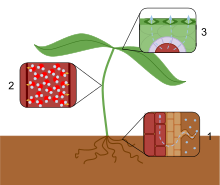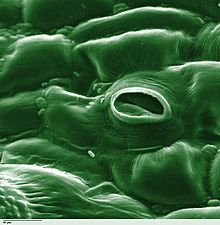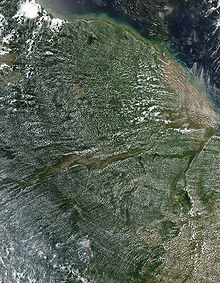
- Water is passively transported into the roots and then into the xylem.
- The forces of cohesion and adhesion cause the water molecules to form a column in the xylem.
- Water moves from the xylem into the mesophyll cells, evaporates from their surfaces and leaves the plant by diffusion through the stomata



Transpiration is the process of water movement through a plant and its evaporation from aerial parts, such as leaves, stems and flowers. It is a passive process that requires no energy expense by the plant.[1] Transpiration also cools plants, changes osmotic pressure of cells, and enables mass flow of mineral nutrients. When water uptake by the roots is less than the water lost to the atmosphere by evaporation, plants close small pores called stomata to decrease water loss, which slows down nutrient uptake and decreases CO2 absorption from the atmosphere limiting metabolic processes, photosynthesis, and growth.[2]
- ^ Reddy, S. M. (2007). University Botany- Iii : (Plant Taxonomy, Plant Embryology, Plant Physiology). New Age International. ISBN 978-81-224-1547-6.
- ^ Runkle, Erik (September 2023). "The Importance of Transpiration". GPN Green House Product News. 33 (9): 12–13.